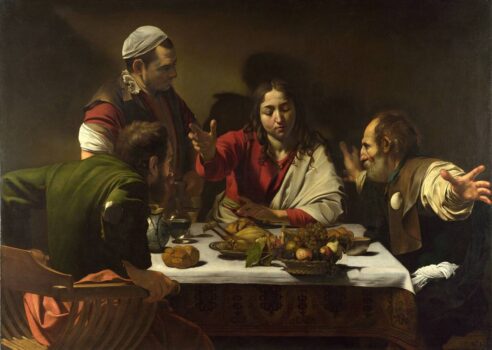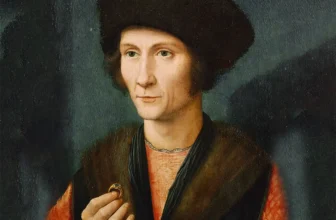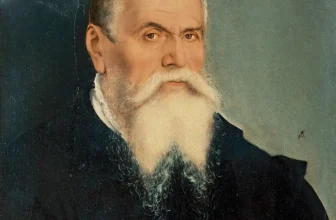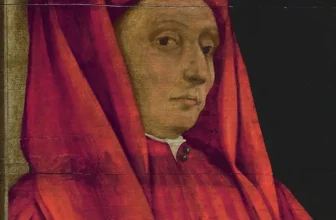How Chiaroscuro Changed 16th–17th Century Portrait Painting , And Why Collectors Still Love It
When Light Became the Language of Emotion
Shopping Ads: Invest in Hidden Masterpiece: Rare Antique Oil Paintings For Sale. Limited Originals Available 💰😊 Are you looking for authentic hidden masterpiece? Explore old master antique oil paintings from the Renaissance and Baroque eras. From 16th-century portraits to 18th-century landscapes. Authenticity guaranteed, Old Master antique oil paintings for sale. Shop Now! 🎨 Renaissance And Baroque Art Old Master Portrait Paintings Landscape Antique PaintingsIn the history of art, few innovations have been as visually striking and emotionally powerful as chiaroscuro , the use of dramatic contrasts between light and dark to shape form, atmosphere, and meaning. Emerging during the late Renaissance and flourishing in the Baroque period, chiaroscuro revolutionized the way painters represented human figures. It was more than a stylistic choice; it became a new visual language for storytelling, emotion, and spirituality.
Between the 16th and 17th centuries, artists such as Leonardo da Vinci, Caravaggio, Rembrandt, and Georges de La Tour transformed portraiture by using light not merely to illuminate, but to reveal the soul. Their works invited viewers to experience drama and intimacy, forging a powerful psychological connection between subject and observer.
Today, centuries later, collectors still chase chiaroscuro paintings , drawn by their theatrical beauty, historical significance, and haunting emotional depth. Understanding why this technique changed art forever begins with its origins in Renaissance experimentation.
What Is Chiaroscuro? A Technique Defined by Light
The term chiaroscuro comes from two Italian words: chiaro (light) and scuro (dark). In painting, it refers to the manipulation of light and shadow to create the illusion of three-dimensional form and spatial depth.
In earlier medieval art, figures often appeared flat or stylized, bathed in uniform light. The Renaissance, however, sought to bring nature and realism to canvas. Artists began studying the way sunlight shaped faces, draped fabric, and defined architecture.
Leonardo da Vinci was among the first to theorize chiaroscuro’s potential. His technique of sfumato , soft transitions between tones , allowed forms to emerge from shadow gradually, without harsh lines. This gave his portraits, like the Mona Lisa, an enigmatic sense of realism and atmosphere.
Chiaroscuro thus became both a technical innovation and a philosophical tool , an exploration of how light reveals truth, and how darkness conceals mystery.
The Renaissance Foundations of Chiaroscuro
During the 15th and early 16th centuries, the Renaissance introduced an obsession with naturalism, anatomy, and perspective. Artists wanted to paint life as it truly appeared, not as symbolic iconography. Chiaroscuro emerged as a natural extension of this pursuit.
Leonardo da Vinci: The Scientist of Light
Leonardo’s notebooks reveal extensive studies of how light reflects, diffuses, and bends around the human face. He believed light could be used to model form more convincingly than line alone. The soft, shadowy transitions in his portraits made his figures appear alive , as though illuminated by an unseen source.
Raphael and Correggio: Ideal Beauty in Light
While Leonardo pursued scientific observation, painters like Raphael and Correggio used chiaroscuro to achieve idealized beauty. Correggio, in particular, emphasized soft lighting that made skin appear luminous. His Holy Night (1528–1530) shows the infant Christ as a literal source of light, bathing the surrounding figures in divine glow , an early sign of chiaroscuro’s symbolic power.
By the mid-16th century, chiaroscuro had evolved from a modeling technique into a storytelling device , preparing the way for the explosive drama of the Baroque era.
The Baroque Explosion: Caravaggio and the Power of Drama
If Leonardo gave chiaroscuro its foundation, Caravaggio gave it its soul. The Italian painter transformed the technique into a theatrical, emotionally charged style that came to define Baroque art.
Caravaggio’s Radical Realism
Caravaggio rejected idealized beauty and mythological distance. Instead, he painted real people , peasants, beggars, and everyday Romans , illuminated by sharp beams of light cutting through darkness. His The Calling of Saint Matthew (1599–1600) epitomizes this approach: a divine beam pierces a dim tavern, revealing the moment of spiritual awakening.
This new intensity became known as tenebrism, a form of chiaroscuro characterized by extreme contrasts between illuminated and shadowed areas. In Caravaggio’s hands, light became divine presence, and shadow became human doubt.
Influence Across Europe
Caravaggio’s followers, known as the Caravaggisti, spread his dramatic lighting across Europe. Painters like Artemisia Gentileschi, Georges de La Tour, and José de Ribera adapted his techniques to local cultures.
In the Netherlands, Rembrandt van Rijn elevated chiaroscuro to psychological depth. His portraits, such as The Night Watch and Self-Portrait with Two Circles, show figures emerging from shadow with introspective realism. Light in Rembrandt’s work doesn’t simply describe , it reveals character.
How Chiaroscuro Transformed Portrait Painting
1. From Description to Drama
Before chiaroscuro, portraiture often focused on likeness and status. Faces were evenly lit, symbolic objects were displayed, and emotions were restrained. With chiaroscuro, portraits became narrative scenes. The subject was no longer static , they existed in a moment of tension, thought, or revelation.
2. Light as Psychology
By manipulating light and shadow, artists could suggest emotion and inner life. A half-lit face implied secrecy or introspection; a sudden burst of light implied divine inspiration or self-discovery. Collectors today are drawn to how chiaroscuro portraits convey human vulnerability , the play of light mirroring the play of consciousness.
3. Spatial Illusion and Realism
Chiaroscuro also enhanced realism. Shadows anchored figures in space, while highlights suggested proximity to the viewer. This created intimacy, as if the sitter existed within the viewer’s own environment. The result was a new kind of portrait: personal, immediate, and alive.
4. Theatrical Storytelling
In Baroque art, chiaroscuro became a visual form of theater. Painters like Peter Paul Rubens and Guido Reni used it to stage grand emotional narratives within single portraits. Draperies glowed against dark backdrops; faces emerged like actors stepping into spotlight. This theatricality made portraits not just representations, but performances.
Symbolism of Light and Darkness
Beyond aesthetics, chiaroscuro carried rich philosophical and spiritual meaning. In the 16th and 17th centuries, Europe was gripped by religious reformations and scientific discoveries. Light and dark symbolized the eternal struggle between faith and reason, salvation and sin, knowledge and ignorance.
For Catholic artists like Caravaggio, divine light symbolized grace piercing worldly darkness. For Protestant artists like Rembrandt, shadow represented introspection and moral ambiguity , a space for human reflection.
In both cases, chiaroscuro became a metaphor for the human condition. Light was not just a visual tool; it was a moral compass.
Chiaroscuro Beyond Painting: Prints and Drawings
The power of chiaroscuro extended beyond oil painting. Renaissance printmakers like Ugo da Carpi developed the chiaroscuro woodcut, layering multiple blocks with different inks to simulate light and shadow. This allowed artists to reproduce paintings’ dramatic lighting effects in print form.
In drawing, artists used white chalk on tinted paper to highlight illuminated areas , a technique favored by Federico Barocci and Guercino. These works, highly prized today, offered collectors affordable yet exquisite studies of light’s expressive potential.
The Collector’s Eye: Why Chiaroscuro Still Captivates Today
Centuries later, chiaroscuro continues to enchant collectors , not merely as a historical style, but as an emotional and aesthetic experience.
1. Timeless Visual Drama
The stark contrast of light and shadow never goes out of style. In a world saturated with digital brightness, chiaroscuro paintings offer depth, silence, and mystery. The viewer’s eye is drawn into dark space, searching for meaning in illumination , a psychological experience unmatched by flatter imagery.
2. Emotional Connection
Collectors often describe chiaroscuro works as “alive.” The dynamic lighting evokes empathy, curiosity, and awe. Whether it’s Rembrandt’s meditative self-portraits or La Tour’s candlelit scenes, the emotional charge feels timeless and intimate.
3. Rarity and Historical Value
Original chiaroscuro paintings from the 16th and 17th centuries are rare, making them valuable investments. Each piece is a bridge to a pivotal moment in art history , the point when painting became not just representation but revelation.
4. Influence on Modern and Contemporary Art
Collectors also appreciate chiaroscuro’s enduring influence. From 19th-century Romanticism to 20th-century cinema, its principles continue to shape visual storytelling. Filmmakers like Alfred Hitchcock and cinematographers in film noir borrowed its moody lighting to convey suspense and psychological tension. Even today’s photographers use “Rembrandt lighting” in portraiture to evoke classical drama.
Chiaroscuro and the Birth of the Modern Viewer
One of chiaroscuro’s most profound legacies is how it changed the relationship between viewer and artwork.
In earlier iconography, sacred images were meant to instruct. With chiaroscuro, the viewer became emotionally involved , drawn into the scene through light. The darkness surrounding figures created a sense of intimacy, as though one had stumbled upon a private revelation.
This direct engagement foreshadowed the modern idea of art as a subjective experience. Instead of telling the viewer what to think, chiaroscuro invited contemplation. This is one reason collectors describe chiaroscuro paintings as “meditative” or “psychological.” They reward slow looking , the kind of attention modern life rarely allows.
The Science of Perception: Why Our Eyes Love Contrast
From a scientific standpoint, chiaroscuro’s appeal lies in how our visual system perceives contrast. The human eye is more sensitive to differences in brightness than in color. Sharp contrasts between light and shadow stimulate visual interest and direct attention.
Moreover, chiaroscuro mimics how we actually perceive the world: not in flat illumination, but in constantly shifting light. This realism makes chiaroscuro images feel more natural , even though they often depict heightened drama.
Neuroscientists studying art perception suggest that chiaroscuro activates the brain’s emotional centers by linking visual contrast to symbolic meaning , light as safety, darkness as danger. Thus, the aesthetic pleasure collectors feel may have deep psychological roots.
Famous Examples Every Collector Should Know
1. Caravaggio – The Calling of Saint Matthew (1599–1600)
A shaft of divine light cuts through a shadowy tavern, highlighting the moment of spiritual awakening. It’s both theatrical and theological , a masterpiece of narrative chiaroscuro.
2. Rembrandt van Rijn – Self-Portrait with Two Circles (1665–1669)
Rembrandt’s mastery of subtle lighting turns his own aging face into a landscape of emotion. The muted highlights emphasize wisdom and vulnerability , qualities modern collectors deeply value.
3. Georges de La Tour – Magdalen with the Smoking Flame (c. 1640)
A single candle lights the contemplative face of Mary Magdalene, symbolizing divine illumination. La Tour’s minimalist chiaroscuro anticipates modern photographic lighting.
4. Artemisia Gentileschi – Judith Slaying Holofernes (1612–1613)
Here, chiaroscuro intensifies violence and courage. The harsh light isolates the women’s faces, turning biblical heroism into psychological realism , a favorite among feminist art collectors today.
The Enduring Legacy in Modern Art
Chiaroscuro’s influence didn’t end with the Baroque. The technique resurfaced repeatedly across centuries:
Romantic painters like Géricault and Delacroix used dramatic lighting to heighten emotion.
Impressionists, though favoring bright daylight, acknowledged chiaroscuro as foundational to modeling form.
20th-century photographers like Edward Weston and Yousuf Karsh revived its psychological depth in black-and-white portraiture.
Film noir and cinematic realism borrowed chiaroscuro’s moody contrast to evoke tension and intrigue.
Even contemporary artists use chiaroscuro-inspired lighting in digital media, installation art, and portrait photography. The human fascination with light and darkness is universal , transcending eras and technologies.
Why Collectors Value Chiaroscuro Works Today
Emotional Depth and Storytelling
Collectors see chiaroscuro not just as an aesthetic, but as a narrative language. Every shadow suggests mystery; every beam of light implies revelation. Owning such a painting feels like possessing a story , one that unfolds with each viewing.
Historical Significance
Chiaroscuro represents a pivotal evolution in Western art, bridging the Renaissance’s search for realism and the Baroque’s passion for emotion. To own a chiaroscuro work is to own a piece of that transformation , a tangible link to history’s turning point.
Investment Potential
Because authentic works from this era are scarce, chiaroscuro paintings often command high prices at auctions. Their combination of beauty, rarity, and scholarly importance makes them desirable both emotionally and financially.
Cross-Disciplinary Appeal
Collectors of photography, cinema, and design also admire chiaroscuro because of its cross-medium relevance. It’s not just old-fashioned art , it’s the foundation of how we visualize emotion in all modern media.
How to Identify and Appreciate True Chiaroscuro
For those exploring the art market, recognizing genuine chiaroscuro involves looking for key traits:
Strong tonal contrast – Distinct transitions between illuminated and shadowed areas.
Directional light source – Usually a single, focused beam (like a window or candle).
Three-dimensional modeling – Forms appear solid and sculptural.
Psychological intensity – The lighting reveals emotion or spirituality, not just realism.
Minimal background detail – Darkness isolates the figure, emphasizing presence.
When evaluating a piece, consider not only its visual drama but also its emotional temperature , the tension between light and shadow that gives chiaroscuro its timeless magnetism.
The Emotional Legacy: Light, Darkness, and Humanity
At its core, chiaroscuro reflects something deeply human: our constant navigation between clarity and obscurity, joy and sorrow, faith and doubt. The technique resonates because it mirrors life itself.
Collectors often describe standing before a chiaroscuro portrait as a meditative act , one that feels both intimate and transcendent. The dark background quiets the mind, while the illuminated face draws empathy. It’s art that breathes.
Why Chiaroscuro Still Matters
From the soft shadows of Leonardo to the blazing drama of Caravaggio and the introspective glow of Rembrandt, chiaroscuro changed how we see both art and ourselves. It turned portraits into emotional landscapes and transformed light into a universal symbol of truth.
In the 16th and 17th centuries, chiaroscuro was revolutionary; today, it remains relevant and collectible because it speaks to enduring human experiences , conflict, revelation, beauty, and mortality.
For collectors, owning a chiaroscuro work is not just about historical prestige. It’s about connecting with a lineage of artists who understood that light and darkness aren’t opposites , they are partners in creating meaning.
The same dance of illumination that once shaped Renaissance faces now shapes how we light our films, stage our photographs, and even interpret our own lives.
In every flicker of contrast, chiaroscuro reminds us: to see is to feel , and in feeling, we discover the light within the dark.




